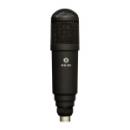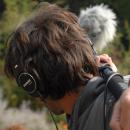sacado del foro de cubase.net:
If you are taking a file digitally from a CD, and importing into WaveLab, then all processing is carried out at 32 bit floating point internally.
As you ripped the Audio, you have transferred it in as it was on the CD. Complete with the dither from previous work, which means that the dither noise is already there.
Also, if you ripped the Audio, odds are extremely high that you have also introduced DC offset into your files at the same time which has to be got rid of.
Best way is to actually re digitize, by playing from the digital outputs of your CD player and running it through your ADC to get it back into your DAW.
Do this at either 24 bit or 32 bit float.
In both cases - you must re dither afterwards.
Wiggum will never stay in the 16bit range as ANY processing in WL is done internally at 32bit float.
To your question:
Beside the fact that dither represents random numbers which can't be just subtracted after the fact (as they are random), you would ruin the effect of your dithering process because any further processing will bring you back to 32bit float again and would require another dithering process when going back to 16bit.
This is what I would think with my (limited) understanding of the whole matter.
Still, I am not quite through with this thread, but I will do some further reading first, before I post anything additional here.
http://www.cubase.net/phpbb2/viewtopic. ... +mix+float
y por último...pregunta:
Seems like a simple question but it doesn't say anything in the manual.
1. My project is 24bit/88.2kHz - so all audio tracks are 24bit
2. I want to master outside of Cubase, so just want to output at highest bitrate and dither if necessary
Do I export to 24bit or 32bit float? Basically I guess I'm wondering does SX change all those 24bit audio files to 32bit float internally so it can do
all the processing at 32bit? hence I'm best off outputing to 32bit float. Or do my 24bit audio files dictate I must export to 24bit? Also If I have a
24bit Project are the VST instruments actually 32bit float? or are they 24bit (like all the audio files). This is confusing me.
respuesta:
Its always a good idea to mix down to the highest quality you can. If all your files are 24 bit, you can just as easily mix down to 32. It doesn't change your files, it just creates the new file (the mixdown file) in 32 bit. You don't dither when you upwards convert. You would need to dither if you created that mixdown to a lesser bit depth like 16 bit. Hope this helps. good luck!
http://www.cubase.net/phpbb2/viewtopic. ... bit+dither 







